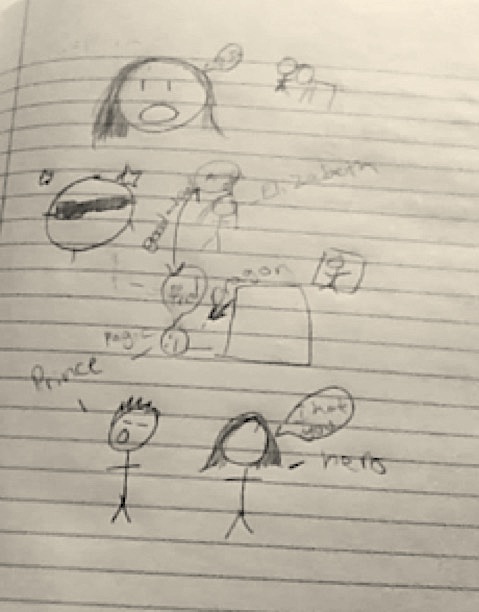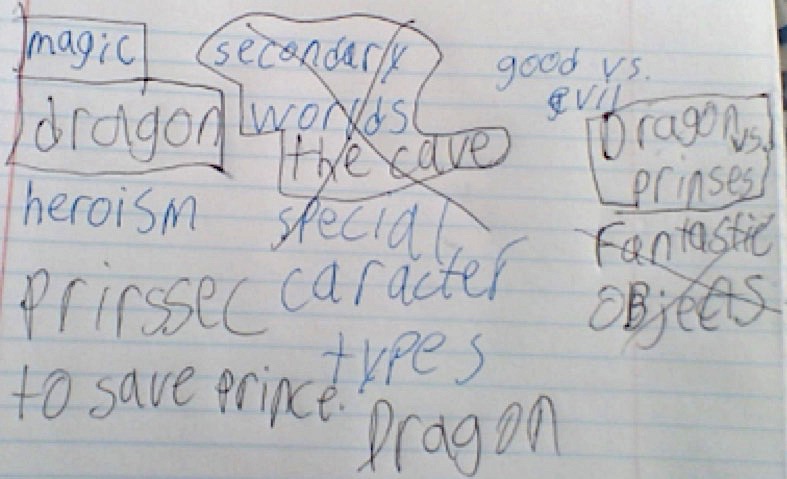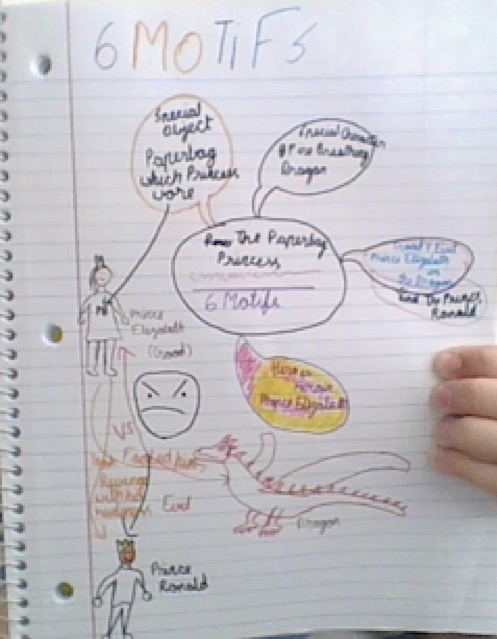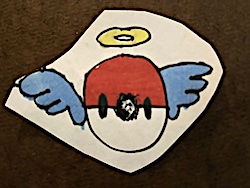Sketchnotes Help Kids Grow Their Mindsets
Sketchnoting is a open-ended, process-focused activity that lets kids show what they’re learning without fitting into a teacher’s predetermined frame.

Does blank space scare you? Or is a blank paper an inviting opportunity to delve into a creative pursuit without limits? What about your students?
Space invites creative expression. Given a choice between blank papers and preprinted pages, many children jump at the chance to fill the white space. Educators can capitalize on that appeal by offering artistic options for students to make their thinking visible.
Open-ended expression supports a growth mindset because it doesn’t pigeonhole students into thinking they must achieve a preconceived notion of perfection or produce the “right answer.”
Who is the Leader?
A product-focused activity is more teacher-directed, requiring students to follow similar directions to produce similar projects that resemble a sample. In her NEA Today article “Encouraging a Growth Mindset through Art” Tempest NeuCollins, a Michigan K-6 art teacher and founder of Doodles Academy, says such assignments have a “narrow definition of success.” There are usually right and wrong ways to complete them, and some students may feel they messed up if their product doesn’t look like your model.
Follow-my-lead activities have their place in classrooms. My goal is to achieve a creative balance by also offering student-guided opportunities focused on the learning process. These activities put fewer limits on creativity, empowering learners to explore and actively engage with their own ideas.
Process-focused projects allow students to find their own voices and let their individuality shine. As they take ownership of the learning process, they’ll struggle to figure things out as they experiment, design, and create.
And, yes, they will make mistakes along the way. Tempest NeuCollins goes on to say, “… instead of mistakes being a failure to replicate an ideal, they are opportunities to expand ideas and use the process as an opportunity to creatively problem solve.”
Different students will approach the same assignment different ways based on background knowledge, past experiences, and perspectives. During a process-focused activity the decision-making process lies in the hands of the student and supports Carol Dweck’s idea of a growth mindset. A student’s active engagement with struggles is valued for the potential it offers for growth.
Sketchnoting Showcases Reflective Thinking
I’ve heard writers say their writing is never finished, but because of due dates, their writing is DONE. It implies the writing process continues well after a submission due date. Similarly, learning is never DONE. Since sketchnotes represent a student’s connected ideas and understandings, they are works in progress too.
Time for a Definition:
Sketchnoting is a form of notetaking where students transform a blank paper into a collection of purposeful doodles, text notes, diagrams, shapes, and other graphics that show visuals of their thinking. Student-initiated sketchnoting invites learners to continuously add to their creations as their understandings develop.
Thanks to a sketchnoting book club, my co-planner extraordinaire Karen Raia and I introduced sketchnoting to our literacy learners to help them grow their visual vocabularies.
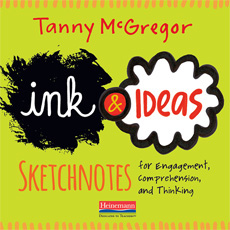
Karen and I strive to give our students as many opportunities as possible to play, practice, and acquire words. After a guided read aloud of Robert Munsch’s The Paper Bag Princess, learners sketchnoted ideas about fantasy motifs.
As you can see from this example, our students let go of perfection as they were free to creatively show the interconnected webs of their own thinking. Our takeaways:
► One size does not fit all. Open-ended sketchnoting offered students a choice of ways to approach the same learning goal.
► Students found it appealing to have the power to choose whether to use words only, pictures only, words and pictures, and other style options.
► Part of the learning process involved students making decisions about what they deemed important enough to be recorded in the sketchnote.
► Students said they felt empowered and in control. It didn’t feel like work on someone else’s terms because it was fun to be creative.
Students discovered sketchnoting strategies are transferable to other content areas, such as math.
Opportunities to Be Vulnerable
By designing a lesson with the growth mindset in mind, we open the possibility for students to experiment and play around with ideas in a safe space.
Free-form projects require the willingness of the teacher to turn control over to the learners. In her 2010 Houston TED Talk, Brené Brown talked about embracing vulnerabilities. She said we need to show children “You’re imperfect and you’re wired for struggle, but you are worthy of love and belonging.”
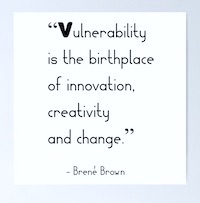
There were no guarantees they’d hit the mark perfectly, but at least students had the chance to express themselves with something in the gray area between right and wrong. And they had fun while being actively engaged with literature.
Sketchnoting resulted in richer, deeper, more personalized responses that continued to spark excitement for learning. It also invited more critical thinking reflection questions. Why did you choose to represent it that way? How are these connected? If you were to add another element, where would you add it? Why?
Coloring Outside the Lines
When a child shows off a completed coloring book page, a natural reaction is to evaluate whether they colored neatly inside the lines. Any time a child has shown how they transformed a blank paper into a drawing or sketchnote, there’s an instant WOW factor for what their creative brain thought to do with the space. Anything they designed on the page was an enhancement of a blank page.
Open-ended sketchnoting actively engages learners in the decision-making process of deciding how to creatively show their learning. The trial-and-error mistakes students make when sketchnoting fuel the growth process – even for those who think they can’t draw and sketchnote.
For students (and teachers) this activity is about being willing to have a sense of adventure while experimenting with ways to represent your thinking. Throughout the design process, you can deepen your understanding of the topic and have fun while purposefully doodling. Draw with a pencil Use a pen. Add color. Add a frame. There’s no right way or wrong way to do it. So go ahead and try it … YOUR way!
References
Brown, B. “The Power of Vulnerability.” TED, June 2010.
Duckworth, Sylvia. (2019)
McGregor, T. (2019). Ink & Ideas: Sketchnotes for Engagement, Comprehension, and Thinking. Portsmouth: Heinemann.
Munsch, R. (2018). The Paper Bag Princess. Toronto: Annick Press.
NeuCollins, T. (2019, March 18). “Encouraging a Growth Mindset through Art.” NEA TODAY.
Kelly Owens is a reading interventionist who helps sixth grade readers and writers overcome past literacy struggles by building stamina, confidence, and a greater love of learning. As a teacher with over twenty-seven years’ experience, she has proudly represented Hillsborough Township Public Schools as a NJ Governor’s Teacher of the Year.
Kelly also co-created Buddies for the Birds, which was featured on the Emmy Award-winning show Classroom Close-up NJ. She earned her Ed.M. from Rutgers University. Additional writing credits include published work with The King School Series (Townsend Press), The Mailbox magazine, and MiddleWeb.

